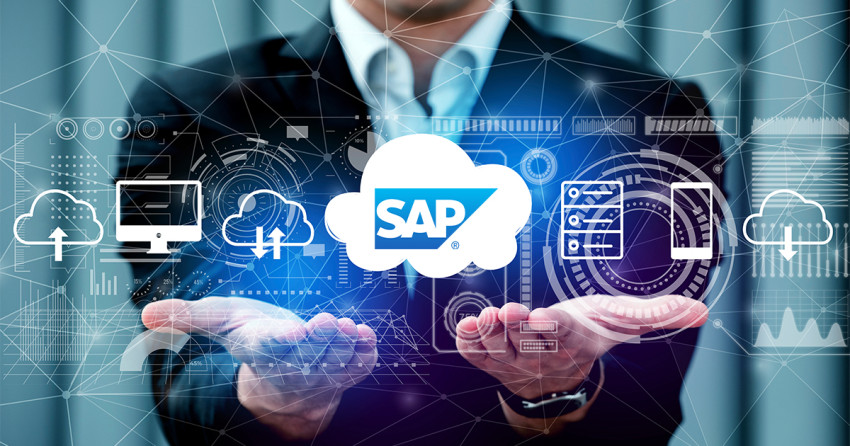
SAP has successfully developed and released an array of software applications and platforms to streamline different types of business processes. One such software is the Commerce Cloud. Dedicated to handle the e-commerce business operations, it opens a host of new opportunities in terms of improved performance, headless architecture, reduced risks, enhanced scalability, cloud accessibility, and many more.
Considering the recent success of SAP Commerce Cloud, we have prepared a complete walkthrough of the platform. In this below section, we will be talking about the platform itself, its benefits, and the features businesses should be prepared for.
What is SAP Commerce Cloud?
Also termed as SAP Hybris, the Commerce Cloud is a digitalized solution for e-commerce businesses based on different models. It provides an omnichannel setup such that the website can perform uniformly and provide an enhanced user experience across all marketing and sales channels. Additionally, it implements the concept of microservices through cloud-native architecture. In other words, the service processes of both the backend and frontend layers are decoupled from one another to establish an advanced level of modularity.
This way, the process services can work independently and reuse with minimal codebase changes. Developers won’t have to worry about impacting any other workflow or component while dealing with a certain microservice. Furthermore, the interaction between different process services in SAP Commerce Cloud is maintained through a set of REST APIs.
What are the potential abilities of SAP Commerce Cloud?
Omnichannel performance
One of the key features of SAP Commerce Cloud is omnichannel performance. It allows developers to build a storefront and business logic layer that act the same throughout, regardless of the channel or touchpoint. So, B2C and B2B businesses can leverage this platform to provide the same user experience across all devices and ensure the performance is not compromised by changes in software or hardware configurations.
Product content management
Thanks to the presence of a centralized content database or repository, it is much easier to handle and streamline all product information. For instance, developers can bulk edit and bulk upload a complete set of products to the backend database without having to deal with each catalog page individually. It not only reduces the time and effort but also ensures the information rendered on the UI is accurate and meets the consumer expectations.
Customer experience management
The latest SAP versions of Commerce Cloud come with a special tool named SmartEdit. It allows developers to build websites, webpages, banners, campaigns, and many more for different operating systems and devices through drag-and-drop features. In other words, the tool makes it easier to customize and deploy UI components as per the business requirements without having to work on the entire codebase from scratch. As a result, the customer experience can be further enhanced.
Order management
One of the major features of the Commerce Cloud platform that makes it ideal for e-commerce businesses is the order management module. From accepting or canceling orders to checking the inventory and updating the stocks, it automates and streamlines all these functionalities for better process handling and faster operations.
SAP Commerce Cloud and integration with other tools
One of the major benefits of SAP Commerce Cloud is its extendibility. In other words, the platform can be integrated with several other tools and third-party plugins for streamlined business operations and enhanced ROIs.
- Spartacus: The Commerce Cloud can be integrated with SAP Spartacus, an open-source JavaScript storefront. This allows developers to work on the storefront UI separately and simply extend the Commerce functionalities for better performance and optimal user experience.
- SAP Sales Cloud: From Deal Finder to Influencer Map, the Sales Cloud allows developers to generate accurate and precise reports and forecasts through data analysis.
- SAP Customer Data Cloud: Integrating this platform with Commerce Cloud allows businesses to store customer data directly on the cloud server. Furthermore, it also offers better authentication protocols, customer data security, and more control of data utilization.
What are the benefits of implementing SAP Commerce Cloud?
- With the latest SAP version upgrade, it is now possible for e-commerce businesses to offer an omnichannel user experience across multiple touchpoints and marketing channels.
- The Commerce Cloud platform also allows developers to extract datasets and put them through analytical software for reporting and forecasting. This way, businesses can learn more about the customer database and offer a highly personalized experience.
- Thanks to the presence of numerous out-of-the-box features, developers won’t have to start coding from scratch. Apart from the pre-built features, Commerce Cloud allows the customization of several UI components and REST APIs needed to maintain interaction between frontend and backend layers.
- SAP Commerce Cloud has a record-breaking SLA of 99.95%, there allowing developers to monitor and optimize the overall performance through health checks and KPI analysis.
- Since it is cloud-based, e-commerce businesses can leverage the platform for higher scalability, increased agility, better flexibility, and enhanced adaptability.
Conclusion
In this article, we have talked about SAP Commerce Cloud and how it benefits B2B, B2C, and several other types of e-commerce businesses. Since the platform is still evolving, we all expect to see more OOTBs and customizations in the coming years. But nonetheless, the Commerce Cloud platform now allows businesses to follow MACH models for their websites.





